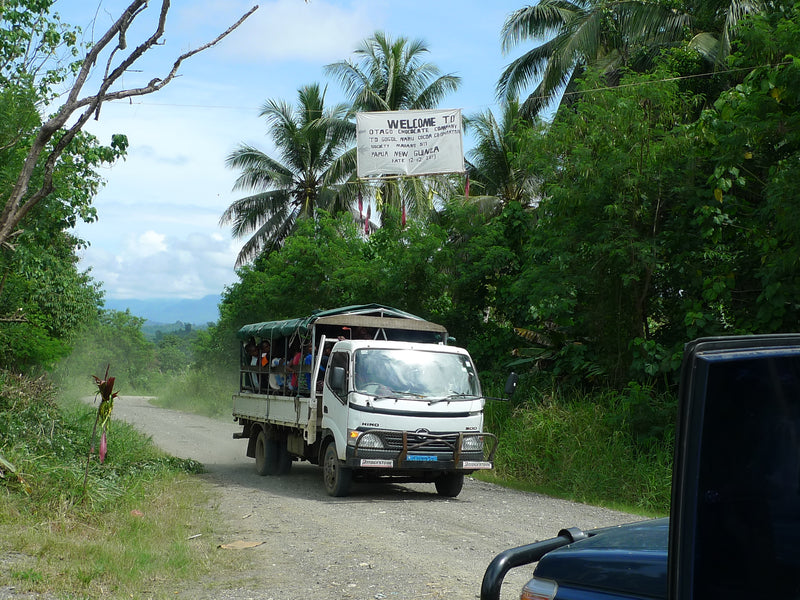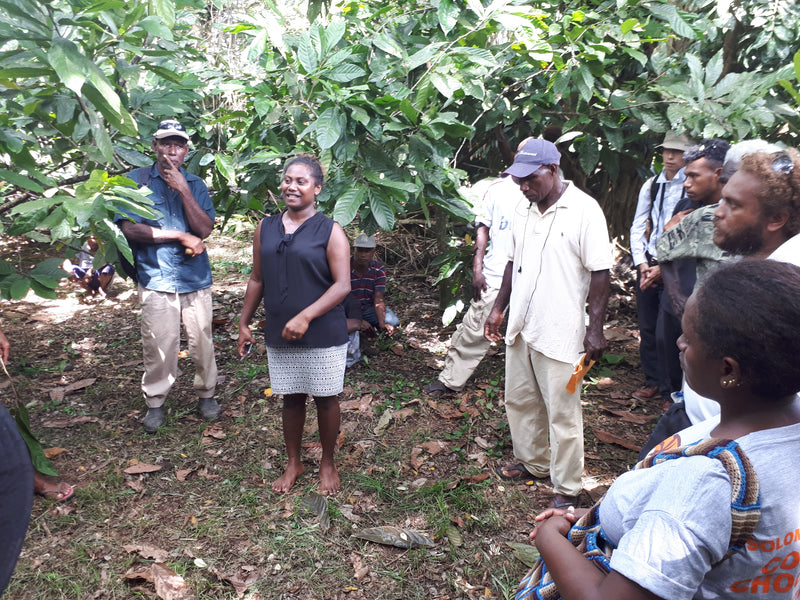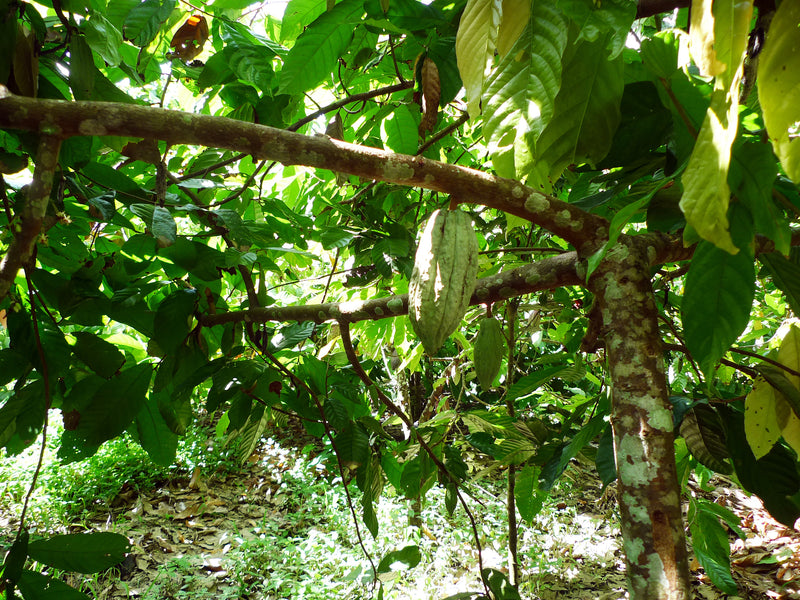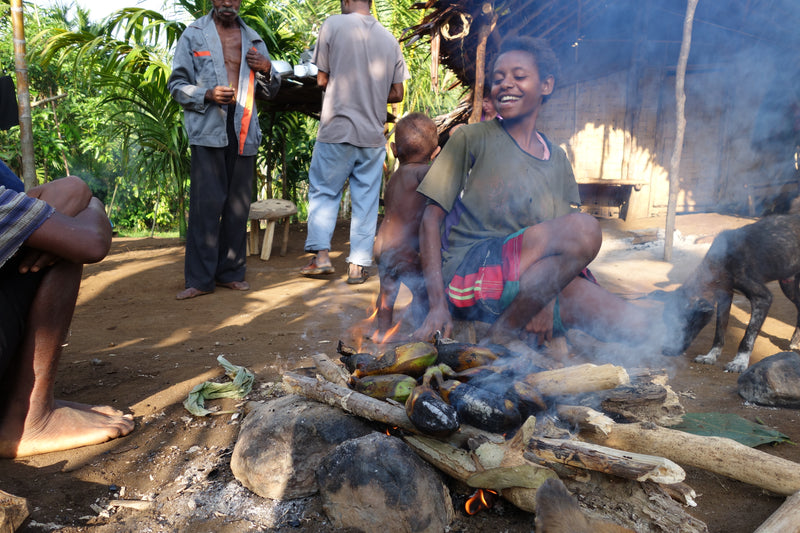Spilling the beans | Where does chocolate get its flavour?
Eliminating the mystery around food production is an important step in building our OCHO community, which is why we are sharing things like what’s really in chocolate on our blog, and why we’ll be taking tours into the heart of our production facility when our new factory space is open. One big mystery is the terminology used on chocolate packaging. This Spilling the beans article dives into the term 'single-origin' and answers the question, where does chocolate get its flavour?

The Otago Chocolate Company welcome sign from OCHO's first sourcing trip to Papua New Guinea.
Planet Earth is a Single-Origin
All the world’s cacao is grown in a narrow band between 20 degrees north and 20 degrees south of the equator. Cacao is a significant commodity in world markets with more than 4.5 million tonnes traded each year and 60% of that trade comes out of the West Coast of Africa.
Single origin is used fairly loosely in the chocolate world. It might mean all the beans come from Papua New Guinea, or that they’re from Madang Province in Papua New Guinea, or it could mean all the beans come from a particular farm within Madang Province. Some craft makers have started using the term ‘farm to bar’, which takes the single origin concept a step further and suggests chocolate made from scratch with beans from a specific farm. At OCHO we take a reasonably strict approach. All our bars are made with beans from a specific farm or farmer cooperative, but we still call ourselves bean to bar rather than farm to bar.
Not that mixing beans or blending is a bad thing because it lets the chocolate maker bring in different flavours to achieve the flavour profile they are looking for. At OCHO we like to keep our sources as transparent and traceable as we can. One thing we certainly don’t do is blend beans across countries because what we love most about our beans is that the taste changes so much depending on where the beans come from.
 Beans grown by Agnes Pilospaso (centre) near Honiara in the Solomon Islands have a different flavour profile than the beans we use from Papua New Guinea or Fiji.
Beans grown by Agnes Pilospaso (centre) near Honiara in the Solomon Islands have a different flavour profile than the beans we use from Papua New Guinea or Fiji.
True or false: More cacao means more flavour?
Like terroir with wine, cacao flavour is influenced by the environment it is nurtured within. Many people rely on cacao percentage as an indicator of ‘strength’ and flavour, but it can be deceptive. For instance, people often comment that our 75% Cacao Fiji bar is milder flavour-wise than our 66% Cacao PNG bar. Papua New Guinea beans have a dark berry flavour that lingers, whereas beans from Fiji are quite nutty.
While flavour development starts in the soil and the type of tree, a lot of the really interesting bit starts in the fermentation box. The way fermentation is managed can have a huge influence on the flavour. The second big round of flavour development is the roasting process.
At OCHO we choose a fairly light roast to preserve as much of the fruit-driven flavours as we can. But roasting profiles vary from maker to maker and, like a winemaking or coffee roasting, there’s no right or wrong just a flavour preference.

Cocoa pods grow directly from the stem of the trees and each tree can have a mix of ripe and unripe pods at any time.
Recognition for cacao suppliers
It’s only by visiting and maintaining contact with farmers that you appreciate the work that goes into producing the fermented and dried beans that we use. Many of the farmers we buy from live in villages with no running water or electricity. Cacao is a ready source of cash for them, whether they are supplying wet beans to a fermentary, or the fermented and dried beans to a bigger depot.
Most of the village is involved, from picking and opening the pods to running the fermentation and drying process. When the beans are ready to be moved there are no forklifts; strong young men carrying the 64 kg sacks on their shoulders and the local bus might be waved down to transport sacks into the depot.
As a business, it would be easy to classify cacao as a raw material and take no interest in where it comes from or the farmers who grow it. But the price paid for cacao beans should not be a decision based on margins, it should be a choice to ensure that the growers get a fair reward for their work.
Connecting product, place, and people
We left empty-handed from a sourcing trip to a village in Papua New Guinea, but the photos we took give you a good idea of what this isolated cacao-growing community looks like. People of all ages are everywhere and most had never tried chocolate. Their houses are made from natural materials, and most go without shoes.
Innasi Village is a 10-hour walk from the nearest road. Sadly, beans we bought from here didn’t eventuate, but it was a fascinating experience seeing life in the middle of the Papua New Guinea rainforest.
At face value, single-origin may be a marketing tool for some companies and perhaps a flavour guide to consumers, but its true essence is as a principle connecting the people who grow the beans and the makers who craft the chocolate. It’s a way of keeping the process honest by ensuring people and place are central every step of the way. At the end of the day, we can only take half of the credit for the flavour of our award-winning chocolate - the rest belongs to the people, the trees, and the soil of the Pacific Islands, proudly stamped on the back of every OCHO chocolate bar.
This blog is the second article in our series, Spilling the Beans, giving insight into the complex world of chocolate making that for a long time has been kept secret. Read the first article, What's really in chocolate here, where we look at the ingredients used to make our craft dark chocolate and compare it to the likes of 'big chocolate' you find on the supermarket shelves.





